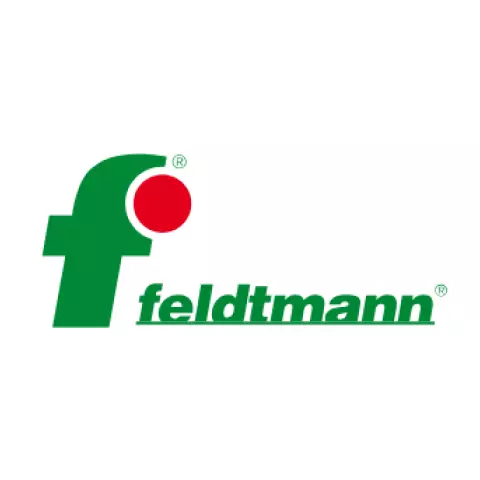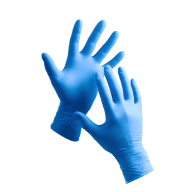STRONGHAND RASMUSSEN Gloves
Feldtmann
visit storeProduct description
Norm: En 388 Liner: 100% Polyacrylic, Red coating: Latex, Crinkled, Black Sizes: 8, 9, 10, 11 Seamless Knitted Glove / 10 G
• Inside Brushed Terry Loop Acrylic
• Very Good Insulation Against Cold ( Max. 30°C )
• Crinkled Latex Palm coating
The surface texture or coating on the palm and fingers that determines how securely the gloves can grip tools, materials, and surfaces during work tasks.
Full finger coverage offers complete protection and warmth, keeping your hands safe and comfortable.
Seamless knit offers superior comfort and dexterity, eliminating irritating seams for a natural feel.
Multi-purpose design offers versatile protection and comfort, ready for a wide range of tasks.
Describes how seams are constructed and positioned on the glove, affecting comfort, durability, and dexterity during use.
Determines how the glove secures around the wrist, affecting fit, protection from debris, and ease of putting gloves on and taking them off.
Indicates which areas of the glove have protective or grip-enhancing coating applied, affecting durability, grip, and dexterity in different work tasks.
Refers to the knit density of the glove fabric, affecting dexterity, comfort, and durability. Higher numbers provide better finger movement and sensitivity.
The material used on the palm side of the glove, affecting grip, durability, protection level, and comfort during use.
The inner material that touches your skin, affecting comfort, warmth, moisture management, and overall fit of the glove.
The material applied to glove surfaces to enhance grip, protection, and durability for specific work conditions and hazards.
- Cold Protective
- Cut Resistant
- Water Resistance
- Slip Resistant
- Hand Protection
Request a free sample
Test first and buy later. Visit any product page to request your free sample.
Standards and labels
EN 388:2016 is a European standard for measuring the performance of protective gloves against mechanical risks (abrasion, cut, tear, and puncture). The standard includes test methods and performance requirements for gloves to be considered compliant. Test results are reported using a series of four numbers, each representing the performance level achieved in one of the tests.
Test results
Abrasion Resistance Level 3EN 388:2016 is a European standard that provides guidelines for assessing the protection levels of gloves against mechanical risks, such as abrasion, cuts, tears, and puncture. The Abrasion Resistance Level 3 indicates a higher level of protection, signifying that the gloves can resist more intensive wear from rough materials. According to the standard, the abrasion resistance test involves rubbing the glove material against sandpaper under a specified pressure until it is worn through. Level 3 abrasion resistance requires that the gloves withstand 2000 to 7999 cycles of abrasion. This enhanced level of durability is appropriate for tasks involving more frequent or more intense contact with abrasive surfaces, such as construction work, woodworking, and handling building materials. Gloves with Level 3 abrasion resistance offer a robust barrier against wear, extending glove life and providing increased protection for the wearer’s hands, thus reducing the risk of injuries in more demanding work environments.
Cut Resistance, Coup Test Level 2EN 388:2016 standard features a Coup Test used to measure Cut Resistance, and a result of Level 2 indicates moderate protection against cuts. This level signifies that the material being tested withstood between 2.5 to 5.0 cutting cycles before the blade penetrated the glove during testing. The Coup Test involves a rotating circular blade with a constant force applied, moving back and forth across the material until a cut through occurs. The sharpness of the blade and the distance of blade travel are measured before the test, and after cutting through the material, to ensure accuracy. Practical implications of a Level 2 result suggest the gloves are suitable for tasks with some cut hazards but are not suggested for high-risk cut environments, such as handling heavy or very sharp materials where a higher level of protection might be necessary. This result helps businesses choose gloves tailored for different workplace needs regarding cut risks.
Cut Resistance, ISO 13997 Level XThe standard EN 388:2016, specifically its segment referring to ISO 13997 test, is designed to assess the cut resistance of materials used in protective gloves. A result denoted as 'Level X' means that test is not performed and the cut resistance of the product cannot be guaranteed.
Puncture Resistance Level 1The European standard EN 388:2016 addresses the puncture resistance of protective gloves, with puncture resistance classified from Levels 1 to 4. Specifically, a Level 1 result indicates minimal puncture resistance. This level of resistance is determined by a test involving a standardized stylus with a specified diameter and force. During the test, the stylus is pressed against the material with a force up to 20 Newtons to assess how well the glove can withstand penetration. A Level 1 rating signifies that the glove provides basic protection against small punctures or stabs, appropriate for areas with minimal risk. Practical implications for this test result suggest the gloves are suitable for light tasks where major risks of punctures are not anticipated, but are not adequate for handling sharp tools or heavy equipment where higher penetration resistance would be necessary.
Tear Resistance Level 4EN 388:2016 is a European standard that establishes criteria for assessing the protection provided by gloves against mechanical hazards, including tear resistance. The Tear Resistance Level 4 classification represents the highest level of tear resistance defined by this standard, indicating that the gloves can withstand the most substantial forces before tearing. According to the testing methodology, gloves are evaluated by measuring the force required to tear a sample of the glove material, with Level 4 requiring a force of over 75 Newtons to initiate and propagate a tear. This high level of tear resistance is ideal for use in environments where gloves are subjected to significant stress and potential damage, such as in heavy industry, construction, and handling of materials with sharp edges. Gloves achieving this level offer superior durability and are essential for ensuring user safety in high-risk mechanical settings, thereby enhancing work efficiency and reducing the frequency of glove replacement.
EN 511:2006 is a European standard that sets requirements for the protection against cold for gloves and mittens. It covers factors such as resistance to cold, water penetration and breathability. Testing must be done by a certified lab and must show that the product meets all requirements of the standard. Possible test results would include pass/fail for each requirement, as well as specific measurement data.
Test results
Convective Cold Level XThe EN 511:2006 standard specifies the requirements for protective gloves against cold, including convective cold. A specific test result of Level X under this standard generally implies that the gloves have not been measured for that specific level of protection against convective cold or did not meet the criteria to be rated at a discernible level; hence, information regarding the protection it could offer at Level X is not provided. The Convective Cold Test involved in EN 511:2006 measures the thermal insulation of gloves when exposed to cold air. This test uses an electrically heated hand model, and the power required to maintain the hand's temperature gives an indication of the glove's insulation effectiveness. The test environment is controlled with progressive cooling, and measurements are taken to assess the insulation level, categorized from Level 1 upwards. The higher the level, the greater the cold insulation offered by the glove, enabling professionals in cold environments to select gloves based on the specific insulation requirements of their workplace activities .
Water Tightness Level XThe standard EN 511:2006 defines the requirements for protective gloves against cold. The reference to a Water Tightness Level X in this standard typically indicates that the glove has not been tested for water tightness. Water tightness is assessed through a specific test method where the gloves are subjected to water exposure under controlled conditions to check for leakage. The gloves are filled with water and then inspected visually to determine the presence of any water leakage. The practical implications of a Level X result for water tightness suggest that the gloves are either not designed to be waterproof or they failed to meet the minimum criteria for being labeled as water-resistant under normal usage conditions. This information is important for procurement professionals focusing specifically on the need for water-resistant or waterproof protective gloves.
EN 420:2003+A1:2009 is a European standard that sets out the general requirements for hand protection, including comfort, fit, and dexterity. Performance requirements include resistance to abrasion, cut, tear, puncture, and impact. Test results should show the gloves meet these requirements.
CE Marking is a label that shows a product meets certain safety and environmental standards set by the European Union. To get the CE Marking, a company must test and certify their product meets these standards. CE Marking is required for many products sold in the EU, including electronics, machinery, toys and medical devices. It helps ensure that products are safe for consumers and the environment, and allows for easy trade within the EU.
PPE stands for "personal protective equipment." PPE Category 2 refers to equipment that is more complex, and has a higher level of risk. Examples of PPE Category 2 include safety helmets, ear protection, and fall arrest equipment. In Europe, PPE Category 2 must meet certain safety standards set by the European Union, which means that it must be designed and manufactured to protect the user without causing harm. Companies that make or sell PPE must prove that it meets these standards. They also must have a quality management system in place and have to be audited regularly by a notified body.
Feldtmann delivery terms
Free delivery when you order more than 1 650,00 kr from Feldtmann
Supplier shipping fee 60,00 kr
Brand minimum 1 500,00 kr
1 347,99 kr
Price per 5 packages (60 pairs)
22,47 kr / pair
Shipping fee is 60,00 kr for orders under 1 650,00 kr
A carton contains 5 packages (60 pairs)
Need larger quantities?
Other products you may like
Recently viewed
Need help?
Get help from our experts
Other products you may like
Similar products you may like
Autonomous sourcing platform
The most efficient way to source and order supplies for your operations
Sourcing
Ordering
List products you’re looking for and we’ll find the best products and prices for you – all for free.
Need help?
Get help from our experts



